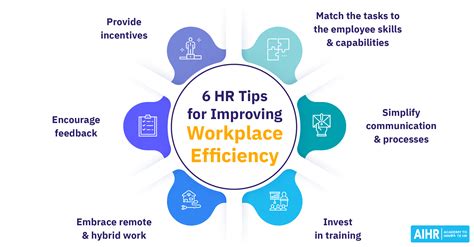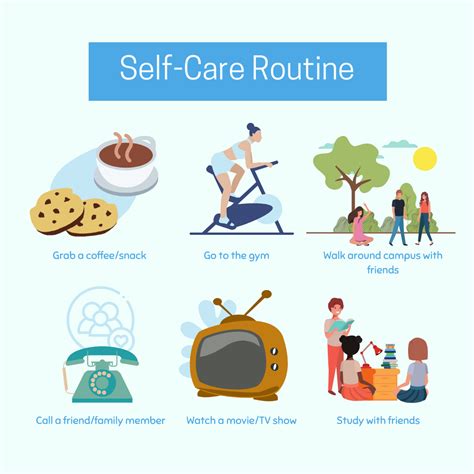As the world continues to adapt to an increasingly digital landscape, the concept of remote work has gained significant traction. Many professionals are now embracing the flexibility and freedom that comes with working from outside the traditional office environment. While this newfound freedom offers a range of benefits, it also presents unique challenges. Maintaining optimal productivity in a remote work setting requires the implementation of effective strategies and techniques.
When working remotely, it is essential to approach your tasks with a laser-like focus. Distractions abound in the absence of a structured office environment, and it's easy to become overwhelmed or lose motivation. However, by leveraging the right tools and applying proven methods, you can unlock your productivity potential and achieve your goals.
In this article, we will explore seven powerful techniques that can help you boost efficiency in a remote work environment. These carefully curated strategies have been crafted by experts who understand the nuances of working outside a traditional office setting. Whether you're a seasoned remote worker or just starting your journey, these tips are designed to optimize your output and ensure you thrive in this evolving work landscape.
Creating a Dedicated Workspace: The Key to Enhancing Efficiency and Focus

When it comes to improving productivity in a remote working setting, a crucial factor that often goes unnoticed is the establishment of a dedicated workspace. Having a specific area exclusively devoted to work can greatly impact your ability to concentrate, stay organized, and ultimately accomplish tasks more efficiently.
Settling down in a dedicated workspace helps create a clear boundary between professional and personal life, allowing you to fully immerse yourself in work-related activities without distractions or interruptions. Whether it's a separate room, a designated corner in your living space, or even a well-organized desk, the key is to create an environment that fosters focus and minimizes potential disturbances.
To maximize productivity, carefully consider the following aspects:
- Ergonomics: Design your workspace in a way that supports good posture and minimizes physical discomfort. Invest in an ergonomic chair and ensure that your desk is at an appropriate height to prevent strain on your neck, back, and wrists.
- Organization: Keep your workspace clutter-free and well-organized. Utilize storage solutions like shelves, drawers, or file cabinets to store important documents and supplies. This will not only enhance productivity but also save valuable time by eliminating the need to search for items.
- Lighting: Pay attention to the lighting in your workspace. Natural light is ideal, as it improves mood and reduces eye strain. If natural light is limited, invest in proper lighting fixtures that provide adequate brightness without causing glare or shadows.
- Personalization: Add personal touches to your workspace that inspire and motivate you. Whether it's placing plants, artwork, or meaningful objects, creating a personalized environment can boost your mood and creativity.
- Technology Setup: Ensure that your workspace is equipped with the necessary technology tools and resources. This includes a reliable internet connection, a functional computer, and any specific software or applications required for your work. Optimize your technology setup to minimize technical issues and maximize efficiency.
- Distraction Management: Minimize distractions by setting boundaries with family members, roommates, or pets. Communicate your working hours and establish rules to limit interruptions during designated work periods. Consider noise-canceling headphones or background noise apps to create a focused ambiance.
- Regular Maintenance: Make it a habit to regularly clean and maintain your workspace. A clean and organized environment promotes a clear and focused mindset, whereas a cluttered space can be distracting and hinder productivity.
By devoting time and effort into establishing a dedicated workspace tailored to your needs, you will create an environment conducive to concentration and productivity. Remember, an organized and inspiring workspace serves as the foundation for achieving your professional goals while working remotely.
Set Clear Goals and Priorities
In order to effectively maximize your efficiency and output in a remote work setting, it is crucial to establish clear goals and priorities. Clearly defined objectives provide direction and focus, helping you stay on track and make the most of your time and resources.
When setting goals, it is important to consider the bigger picture and align them with your team's or organization's objectives. This ensures that your individual efforts contribute to the overall success of the team and create a sense of purpose. Prioritizing tasks based on their importance and urgency allows you to allocate your time and energy efficiently, ensuring that the most critical tasks are completed in a timely manner.
One effective technique for goal setting is the SMART framework. SMART stands for Specific, Measurable, Achievable, Relevant, and Time-bound. By applying these criteria to your goals, you create a clear and actionable plan of action. Specific goals eliminate ambiguity and provide clear guidelines, while measurable goals allow you to track your progress and determine when the goal has been achieved.
Another aspect of setting clear goals is breaking them down into smaller, manageable tasks. This helps prevent overwhelm and allows you to focus on one step at a time. Breaking goals down also enables you to prioritize tasks based on their importance and urgency, ensuring that you are constantly working towards the most significant milestones.
| The Benefits of Setting Clear Goals and Priorities: |
|---|
| 1. Improved focus and concentration |
| 2. Enhanced productivity and efficiency |
| 3. Motivation and a sense of accomplishment |
| 4. Better time management and resource allocation |
| 5. Alignment with team and organizational objectives |
By setting clear goals and priorities, you can optimize your performance and make the most of your remote work experience. The benefits of this practice extend beyond individual productivity, positively impacting the overall success of your team and organization.
Manage Distractions Effectively

In order to enhance productivity and maximize efficiency while working remotely, it is crucial to effectively manage distractions. Distractions can hinder focus, disrupt workflow, and ultimately lead to a decrease in productivity. Therefore, implementing strategies to manage distractions becomes essential for achieving optimal results.
- Prioritize tasks: Creating a clear and prioritized task list allows you to focus on the most important activities that require your attention. By organizing your tasks, you can minimize distractions and stay on track.
- Establish a dedicated workspace: Setting up a designated workspace helps separate your personal life from work responsibilities. This physical boundary reduces potential distractions and creates a productive environment.
- Set boundaries: Communicate with those around you about your work schedule and establish boundaries to minimize disruptions. Clearly define your availability and inform others of specific times when interruptions should be avoided.
- Eliminate digital distractions: Turn off notifications on your electronic devices or use productivity apps to block certain websites and applications during your work hours. This will help maintain focus and limit the temptation to get sidetracked.
- Practice time management: Implementing effective time management techniques, such as the Pomodoro Technique or time blocking, can help you stay focused and productive. These methods involve dividing your work time into structured intervals, allowing for breaks and reducing the likelihood of distractions.
- Use noise-cancelling headphones: If your work environment is prone to external distractions, investing in noise-cancelling headphones can help minimize background noise and create a more conducive atmosphere for concentration.
- Take regular breaks: While it may seem counterintuitive, taking regular breaks can actually improve productivity. Short breaks allow your mind to rest and recharge, reducing the chances of burnout and improving overall focus.
By implementing these techniques and utilizing effective distraction management strategies, you can create an optimized work environment that promotes productivity and minimizes disruptions. Remember, each individual may have different distractions, so it is important to identify the specific factors that impact your focus and tailor your approach accordingly.
Create a Daily Routine
Establishing a structured and organized routine can significantly enhance your efficiency, effectiveness, and overall performance in a remote work setup. Having a consistent daily routine helps you maintain focus, prioritize tasks, and optimize your productivity throughout the day.
Here are some valuable strategies to consider when building your daily routine:
- Plan your day: Begin each morning by mapping out your schedule and identifying your top priorities. This strategic planning allows you to set clear goals and allocate time accordingly.
- Break tasks into manageable chunks: Divide larger tasks into smaller, more achievable parts. This approach helps you avoid feeling overwhelmed and allows you to tackle tasks with greater ease and concentration.
- Establish dedicated work blocks: Set specific time blocks for focused work without distractions. This enables you to dedicate uninterrupted periods solely to your core responsibilities and ensure maximum productivity.
- Take regular breaks: Incorporate short breaks into your routine to rest, recharge, and rejuvenate your mind. Stepping away from work periodically helps maintain mental freshness and allows for more sustained focus when you return.
- Engage in physical activity: Integrate physical exercise into your daily routine. Regular physical activity boosts energy levels, enhances cognitive function, and promotes a healthier work-life balance.
- Avoid multitasking: Instead of juggling multiple tasks simultaneously, focus on one task at a time. Prioritize completion and quality over quantity, as this approach fosters deeper concentration and mitigates errors.
- Reflect and evaluate: End each day by reflecting on your accomplishments and identifying areas for improvement. This self-assessment helps streamline your routine, refine your approaches, and optimize future productivity.
Developing and adhering to a personalized daily routine empowers you to take control of your workday, optimize your time management, and achieve greater success in a remote work scenario.
Utilize Efficient Tools and Applications to Enhance Work Efficiency

In today's digital era, there is an abundance of innovative tools and applications available that can greatly amplify your productivity while working remotely. Embracing these productivity-enhancing technologies can assist you in optimizing your workflow, organizing tasks and projects, streamlining collaboration, and effectively managing your time. By harnessing the power of these tools, you can ensure that you make the most out of your remote work setup and achieve outstanding results.
Task Management ToolsTask management tools play a vital role in keeping track of your assignments and deadlines, enabling you to prioritize tasks and efficiently allocate your time. These tools provide features like creating to-do lists, setting reminders, and monitoring progress, ensuring that your workflow remains structured and organized. | Collaboration PlatformsCollaboration platforms offer a seamless way to work and communicate with your colleagues, regardless of your physical location. They provide features such as real-time messaging, video conferencing, file sharing, and project management, facilitating effective teamwork and enhancing productivity within a remote work environment. |
Time Tracking ApplicationsTime tracking applications help you monitor and manage your time effectively, ensuring that you stay on track and meet deadlines. These apps offer features like time logging, activity tracking, and productivity analysis, enabling you to identify areas of improvement and make necessary adjustments to enhance your overall efficiency. | Note-Taking ToolsNote-taking tools provide a convenient way to capture and organize your thoughts, ideas, and important information. These tools offer features such as cloud syncing, cross-platform accessibility, and collaborative note-taking, allowing you to have a digital workspace for all your notes and reference materials. |
Project Management SoftwareProject management software enables efficient planning, execution, and monitoring of projects in a remote work environment. These tools offer features such as task assignment, progress tracking, resource management, and team collaboration, helping you stay organized and on top of your projects. | Automation ToolsAutomation tools can significantly reduce manual and repetitive tasks, freeing up your time for more meaningful and strategic work. These tools automate various processes, such as email marketing, data entry, file organization, and report generation, allowing you to focus on high-value tasks and increasing your overall productivity. |
By leveraging the capabilities of these productivity tools and applications, you can streamline your remote work experience, optimize your workflow, enhance collaboration, and ultimately achieve higher levels of productivity. Keeping up with the ever-evolving technology landscape and adopting the right tools tailored to your needs will empower you to make the most of your remote work environment.
Collaborate and Communicate Efficiently
In today's interconnected and fast-paced work landscape, effective collaboration and communication play a vital role in maximizing productivity and achieving desired outcomes. The ability to work together seamlessly, share ideas, and exchange information in a remote setting is essential for teams to achieve their goals successfully.
Here are some techniques to enhance collaboration and communication in a remote work setup:
1. Embrace digital tools: To overcome the physical barriers of remote work, utilize various digital tools and platforms designed for collaboration. These can include project management systems, file sharing platforms, online messaging applications, video conferencing tools, and virtual whiteboards. |
2. Foster a culture of transparency: In a remote work environment, it is crucial to establish a culture of open and transparent communication. Encourage team members to share updates, progress, challenges, and ideas regularly. This helps foster transparency, enhances trust, and ensures everyone is on the same page. |
3. Establish clear channels of communication: Define and establish clear channels of communication to avoid confusion and miscommunication. Determine which platforms or tools will be used for different types of communication – whether it's instant messaging for quick queries, video calls for discussions, or emails for formal documentation. |
4. Encourage active participation: Encourage team members to actively participate in discussions, brainstorming sessions, and online meetings. Create a safe space for sharing ideas, asking questions, and providing feedback. This inclusive approach helps in generating creative solutions and promotes a collaborative work environment. |
5. Schedule regular check-ins: Set up regular check-ins with individual team members and the entire team to provide updates, discuss priorities, and address any concerns. These check-ins can be conducted through video calls or virtual team meetings. It's important to stay connected and keep everyone informed about key developments. |
6. Utilize visual aids: When presenting ideas or information remotely, leverage visual aids such as graphs, charts, and diagrams. Visual representations can enhance understanding, convey complex concepts clearly, and engage remote participants more effectively. |
7. Promote collaboration through teamwork: Encourage teamwork and collaboration by assigning group projects, fostering virtual team-building activities, or creating shared spaces for brainstorming. Collaboration strengthens relationships and cultivates a sense of unity, which leads to better productivity and innovative solutions. |
By implementing these techniques, remote teams can collaborate efficiently, exchange ideas seamlessly, and achieve remarkable results regardless of their physical locations. Effective collaboration and communication are at the core of a thriving remote work environment.
Take Regular Breaks and Practice Self-Care

One important aspect of optimizing your performance and maintaining a healthy work-life balance is recognizing the significance of taking regular breaks and prioritizing self-care.
It can be easy to fall into the trap of continuous work, especially when working remotely, but not taking breaks can lead to burnout and reduced productivity. By intentionally scheduling regular breaks throughout your workday, you give yourself an opportunity to recharge and rejuvenate.
Breaks can take various forms, such as short walks, stretching exercises, or engaging in a hobby you enjoy. These breaks help to alleviate physical and mental strain, improve focus, and enhance creativity.
In addition to taking regular breaks, practicing self-care is crucial in maintaining productivity. This encompasses activities that promote your well-being, both physically and mentally. It could involve activities like exercising regularly, getting enough sleep, maintaining a nutritious diet, or engaging in mindfulness practices.
Self-care also extends beyond physical health. It's important to prioritize your emotional and mental well-being by setting boundaries, managing stress levels, and seeking support when needed. Taking care of yourself holistically will contribute to your overall productivity and ensure sustainable performance in a remote work environment.
FAQ
How can I boost my productivity while working remotely?
There are several techniques you can try to boost your productivity in a remote work environment. Firstly, establish a dedicated workspace that is free from distractions. Additionally, create a schedule and stick to it, just as if you were working in an office. Prioritize your tasks and break them down into smaller, manageable chunks. Utilize technology tools to stay organized and communicate effectively with your colleagues. Take regular breaks and make sure to incorporate exercise into your day. Finally, set boundaries between work and personal life to maintain a healthy work-life balance.
What are some tips for staying focused while working remotely?
Staying focused while working remotely can be challenging, but there are techniques that can help. Firstly, eliminate distractions by turning off notifications on your phone and computer. Use time management techniques, such as the Pomodoro Technique, to work in focused bursts with short breaks in between. Set specific and achievable goals for each day or week to stay motivated. Create a to-do list and prioritize tasks based on their importance and deadlines. Finally, establish a routine and establish clear boundaries with family members or roommates to minimize interruptions.
How can I maintain effective communication with my colleagues while working remotely?
When working remotely, it is essential to maintain effective communication with your colleagues. Firstly, utilize communication tools such as video conferencing, instant messaging, and email to stay connected. Schedule regular check-ins with your team to discuss projects and provide updates. Be proactive in sharing information and ask for clarification if needed. Use clear and concise language when communicating and be mindful of time zone differences if you have remote colleagues in different locations. Finally, express appreciation and provide feedback to keep the lines of communication open and positive.
What strategies can I use to prevent burnout while working remotely?
Preventing burnout while working remotely is crucial for maintaining your well-being. Firstly, set clear boundaries between work and personal life. Create a designated workspace and try to maintain regular working hours. Take regular breaks throughout the day and make sure to incorporate physical activity or hobbies into your routine. Disconnect from work during non-working hours and avoid excessive overtime. Practice self-care by getting enough sleep, eating well, and managing stress through techniques such as meditation or mindfulness. Finally, reach out for support when needed, whether from colleagues, friends, or professionals.



